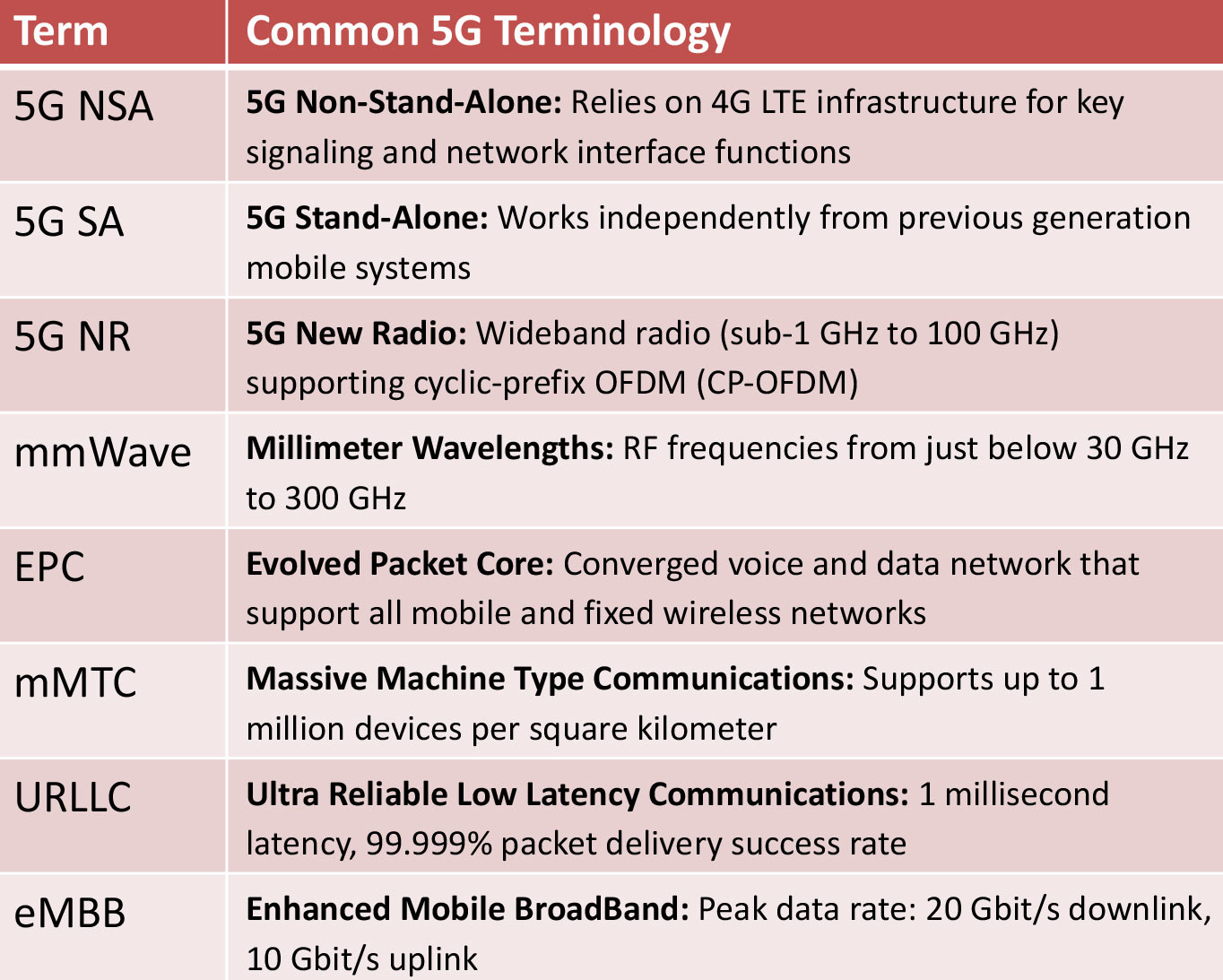Why Broadcasters Should ‘Take 5’
ORANGE, CONN.—With last month’s approval of the 5G SA standard, it’s time to take examine what this means for broadcasters and other media organizations. We’ll begin with a look at the different releases.
The first portion of the 5G standard that was released late in 2017 was called “5G NSA” which stands for non-standalone. In this version of the specification, 5G devices shared the same infrastructure as 4G LTE known as the EPC (Evolved Packet Core). This interim step allowed product development and live technology trials to go forward without requiring vast amounts of new software and back-end systems to be designed prior to deployment. This is also likely to become a tool for accelerating deployments in areas with widespread LTE coverage.
[Read: Five Ways 5G Will Change Television]
The second release of the standard occurred in June, and is called 5G SA (for stand-alone). In this scenario, 5G user devices and base stations work together without relying on 4G LTE. In the long term, SA deployments should tend to dominate NSA ones, due to the wider range of device capabilities and services supported by the newer standard.
Overlaying all of this is 5G NR (for New Radio), which specifies a much more flexible set of channel configurations and raft of new RF frequencies. As NR-compliant devices come onto the market, many new applications open up, including higher bandwidths, lower latencies, and support for enormous populations of low-power, low-bitrate devices that are often called the Internet of Things (IoT). Not all devices will have all these capabilities, but taken together, the 5G is much more flexible than any mobile standard that has come before.
THE EFFECT ON MEDIA COMPANIES
Overall, 5G deployments should be positive for content providers, which are prodigious consumers of bandwidth. The impact of 5G on delivering content to viewers will be similar in nature to the ongoing upgrades of fiber-optic connections to households today. More bandwidth at a lower price will mean that higher quality signals can be delivered to a larger population of viewers. Others have written about the possible areas of cooperation and competition between 5G and ATSC 3.0 so we won’t go into that here.
The professional video industry's #1 source for news, trends and product and tech information. Sign up below.
Where 5G technology gets really interesting for broadcasters is in live contribution network for news and sports applications. With today’s limited bandwidths available on 4G LTE systems, video signals need to be heavily compressed and then spread across multiple channels using a technology known as cellular bonding. As new 5G infrastructure becomes available, wider bandwidths will be supported allowing higher bit rate video signals to be sent over fewer radio channels. Less video compression will also mean less delay, allowing these signals to be more user-friendly for two-way interviews and other time sensitive applications.
GIGABIT WIRELESS LINKS
One of the ways that 5G will be able to achieve the high bit rate links that are part of the specification is through the use of new, high frequency RF spectrum. There simply isn’t enough radio spectrum available at the lower frequencies (those below 6 GHz) to provide high data rate connections to hundreds of simultaneous users.
To take advantage of this new spectrum to deliver gigabit data speeds over a wireless link, several different technologies are required, including massive MIMO, millimeter wave radio frequencies, and advanced bandwidth management. Initially, for reasons described below, deployments will be in fixed wireless applications, but mobile gigabit links should be coming in the future.
Basic MIMO (Multiple Input, Multiple Output) is a feature of many wireless routers today, where two or more antennas are deployed at one or both ends of a radio link to improve the data throughput of a single radio channel. Massive MIMO improves on this approach by increasing the number of base station antennas into the hundreds. This provides even more bandwidth for mobile devices, which can also have their own set of multiple antennas. Note that antennas can be made smaller as frequencies increase, making compact handset and modem design easier.
Millimeter wave radio frequencies are in the range of 30 to 300 GHz, where wavelengths range from 10 to 1 millimeter. One big benefit of working in this frequency band is that there is a lot of radio spectrum available. In the United States, an 850 Mhz band between 27.5 and 28.35 GHz has been set aside for licensed use, as well as two bands totaling 3 GHz between 37 and 40 GHz. Another 7 GHz of unlicensed spectrum is available between 64 and 71 GHz. Other countries have provided significant chunks of bandwidth in similar frequency bands, so a worldwide market for equipment will fortunately exist.
Certain challenges will hinder the use of the millimeter band for mobile applications. One issue is the shorter propagation distances that can be realized with at the higher frequencies, which means that more base stations will be needed to cover the same geographic area. One proposal that is being discussed is using lamp posts along city streets to act as cell towers, which will certainly drive a lot of new construction. A second challenge is the difficulty that higher frequencies have in penetrating the walls of buildings and foliage, which means a huge difference between line-of-sight and non-line-of-sight propagation models. Another challenge is weather, with rain and fog causing significant decreases and signal propagation.
The ability to prioritize selected categories of traffic will also be important for video contribution applications. Once carriers have the proper technical (and legal) frameworks in place, they will be able to provide dedicated high-bitrate channels to users who need them and are willing to pay a premium price. This will help avoid some of the difficulties experienced by today’s bonded cellular applications where large concentrations of mobile devices consume all of the available bandwidth.

DEPLOYMENT TIMEFRAME
Now that the 5G standard is in place, deployment should speed up. Device manufacturers now have a firm spec to use when developing base stations and handsets, which should start appearing on the market in significant quantities later this year and into early 2019. Also, carriers can begin the task of designing coverage plans for their service areas. For mobile applications, most of the focus will be on frequencies below 6 GHz for the time being.
All of the major wireless carriers in the United States have announced their rollout plans for 5G that began in either 2018 or 2019. Initially these deployments will be limited to a handful of cities for each carrier and most likely will focus on those areas with the highest user densities. Once user devices that support the full 5G standard become available, the pace should pick up considerably. However, considering the huge geographies that need to be retrofitted, it will likely be well into the 2020’s before most of the U.S. is covered with 5G service. So the good news for media companies is that 5G is coming, but we may all need to grab a cup of coffee, “take five” and be patient while all the pieces are put in place.
Wes Simpson is the president of Telecom Product Consulting. He can be reached viaTV Technology.
Wes Simpson is President of Telecom Product Consulting, an independent consulting firm that focuses on video and telecommunications products. He has 30 years experience in the design, development and marketing of products for telecommunication applications. He is a frequent speaker at industry events such as IBC, NAB and VidTrans and is author of the book Video Over IP and a frequent contributor to TV Tech. Wes is a founding member of the Video Services Forum.

